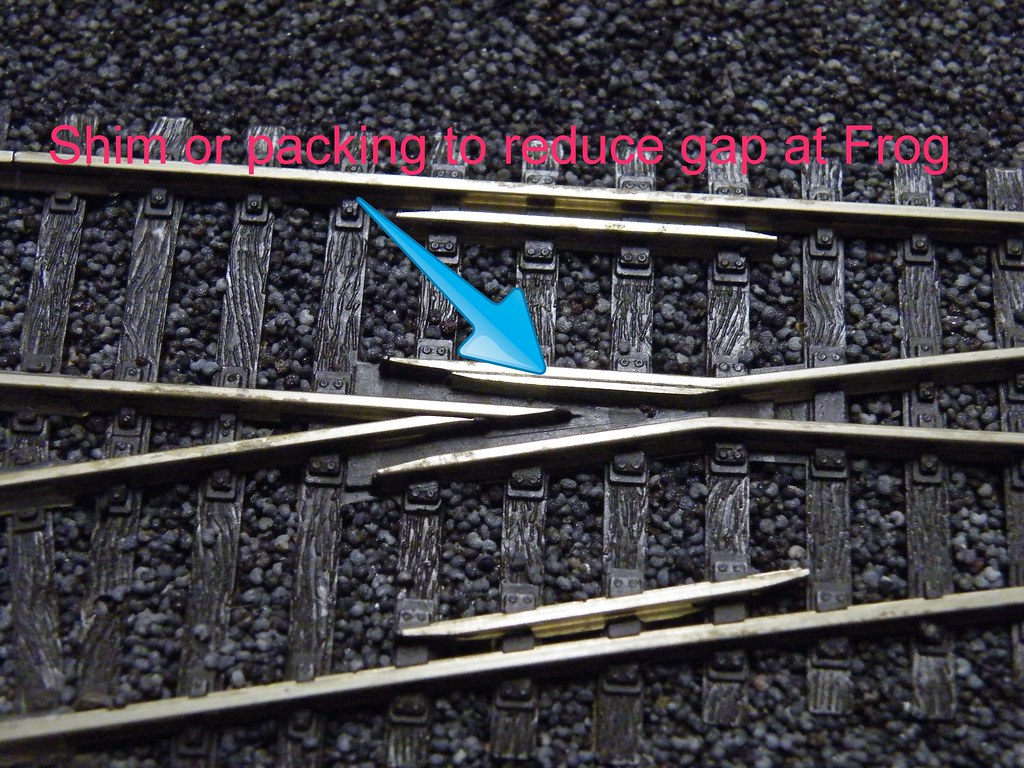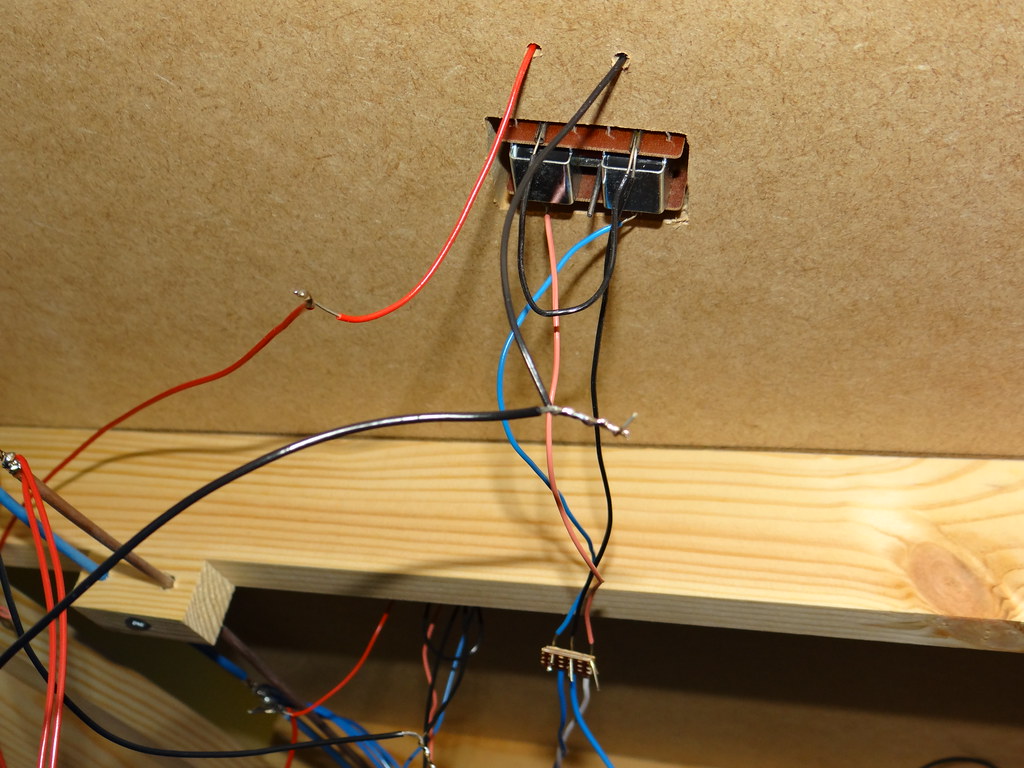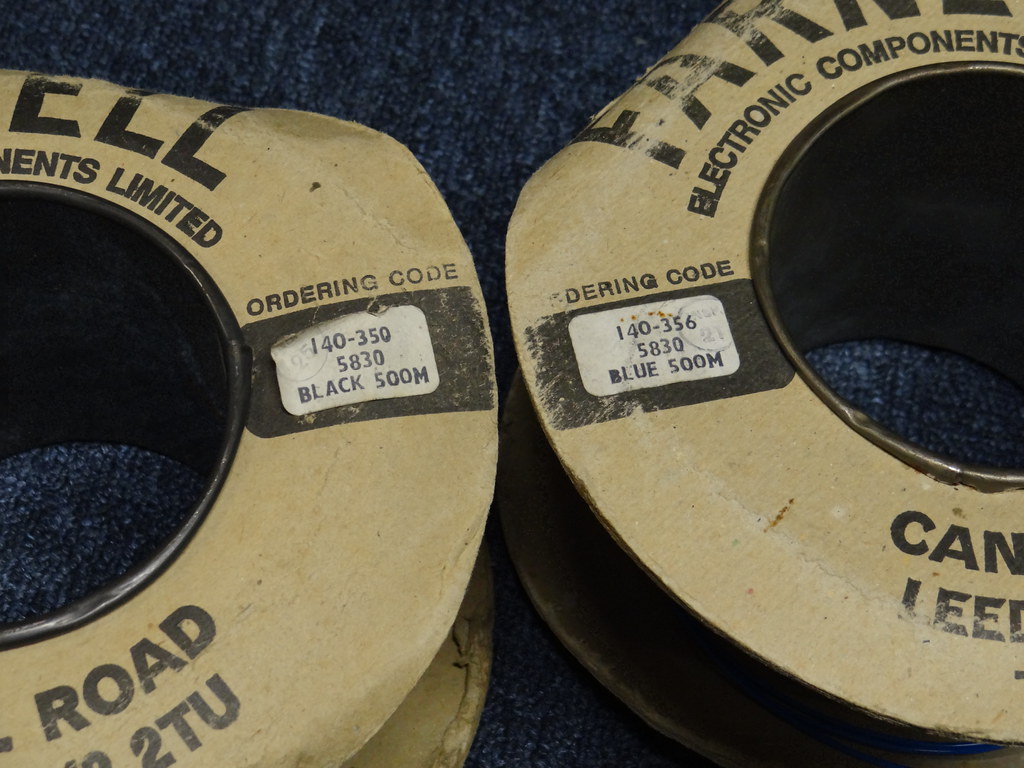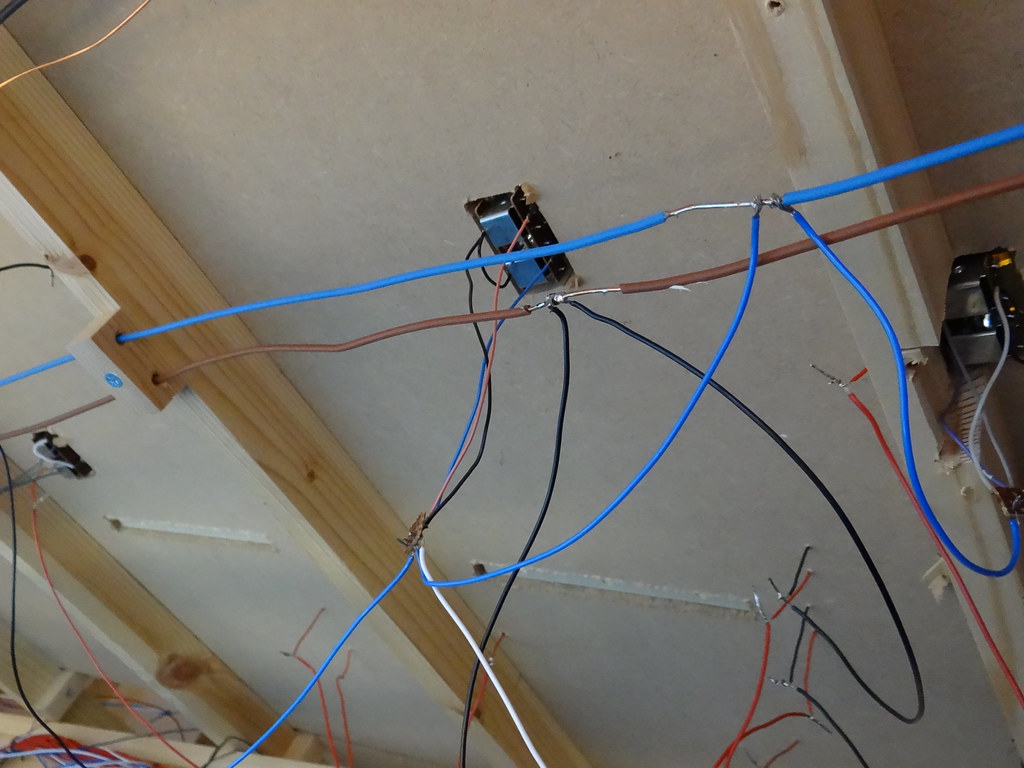Wiring – a knotty problem
There has been some discussion recently about techniques and materials for connecting ‘droppers’.

Single Core 0.6mm tinned wire for making droppers
Those of you who read this Blog will know that it is an account of my own experiences and as such it contains descriptions of activities and techniques that work for me. Since 1980 I have constructed three large layouts. They have all used Code 100 Peco Streamline track. For each layout I have reused and added to the components from the previous layout. Hence I do not know the current length of track – but I am guessing that it is perhaps in the order of 150 yards. Certainly there are over 100 points some of which date back to the 1980s. The only concession to the 21st Century being that some of the earliest Peco points have had shims added at the frog to ease the passage of the finer scale wheels favoured by Bachmann.

Early Peco Medium Radius Electrofrog Point with shim
All three layouts have been DC and have used ‘Cab Control’. That is where the track is divided up electrically into individual sections separated by nylon insulating rail joiners. Within each track section the individual lengths of track are connected with Peco SL-10 nickel silver rail joiners. For running lines there will be typically three or four lengths of track to each ‘Section’ all connected together with Peco rail joiners. However where sidings are involved there may be a dozen or more lengths of track all connected together in one ‘Section’. In the early days I once purchased some Lima flexible track and some of their rail joiners. Not something that I was minded to repeat and I would definitely not be recommending.

Droppers – single core 0.6mm wire attached to Peco rail joiners
The technique that I have adopted over the years for connecting the power supply to the track involves the use of droppers – short lengths of single core 0.6mm cross section wire fitted to track lengths prior to laying. In the early days I attached the droppers directly to the Code 100 nickel silver rail. However the rail is quite a large ‘heat sink’ and by the time it has been heated up locally to attach the dropper there is a distinct possibility of melting the surrounding chairs and sleepers. Hence I have for some time attached the droppers to ‘brand new’ rail joiners, red wires for connection to the Control Panel, black wires for connection to the common return. There is an added benefit in the development stage of the layout in that any problems with points and motors can be dealt with relatively easily by sliding back the soldered rail joiners and lifting out the affected point.

Underside baseboard view beneath turnout
The view above shows the arrangement of the wring at the toe of a turnout, showing the droppers attached to larger multi strand wire used to connect back to the Control Panel (red) or Common return (black). The combination of single core wire with multi-strand wire has the benefit for the more elderly railway modeller, in that the two wires can be wrapped together prior to soldering without the need for extra hands– something which can be tricky underneath the baseboard with hot solder. Do I hear ‘Risk Assessments’ mentioned?

Reels of Multi-Strand Wire
I have included a picture of the reels of wire I use for connecting the droppers to the Control Panel and to the Common Return. It seemed suitably heavy and was available – perhaps the labels will mean something to others of you ‘out there’?

Not a pretty picture
A picture for all seasons? A typical view beneath the baseboard showing the ‘brown’ Common Return stripped from 240 volt ring main cable. The parallel blue core fulfills a similar role with regard to powering the point motors.
Does it work? Of course it works – take a look at the
-
 7
7


.thumb.jpg.60c53fcbcaa34017b05b8919d1a9e6d2.jpg)

10 Comments
Recommended Comments
Create an account or sign in to comment
You need to be a member in order to leave a comment
Create an account
Sign up for a new account in our community. It's easy!
Register a new accountSign in
Already have an account? Sign in here.
Sign In Now